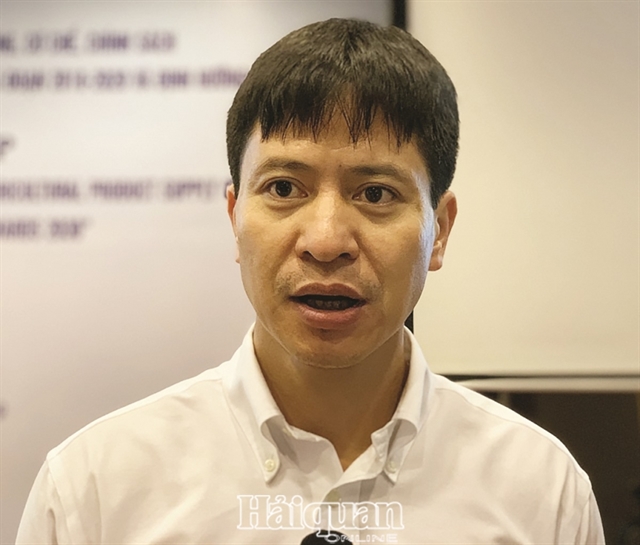 Opinion
Opinion


|
| Nguyễn Minh Tiến. — Photo baohaiquan.vn |
Nguyễn Minh Tiến, head of the Central Co-ordination Office for New-style Rural Area Building talks to the newspaper Hải quan (Customs) on the need to raise the quality of Vietnamese farm products
What is the current stage of the proposal to develop a modern supply system of farm products in Việt Nam from 2020-2045?
After nine years implementing the national target programme on new-style rural area building, Việt Nam has scored many remarkable achievements. However, we still face two major challenges on how to raise Vietnamese farmers’ income and how to promote the consumption of agriculture products.
Addressing the recently concluded 8th session of the National Assembly, the agriculture minister said the most important mission for the agricultural sector was to look for its outlet markets - a key driving force for the development of the Vietnamese primary industry.
In November last year, Deputy Prime Minister Vương Đinh Huệ, director of the Central Steering Committee for the programme in 2016-2021, assigned the Ministry of Agriculture and Rural Development (MARD) to work closely with Vietnamese agencies to develop a proposal for the establishment of a national centre for the supply of Vietnamese agriculture products from 2020-2030. By now the proposal on technical support has basically been completed and it will soon be submitted to the MARD leaders for approval before submitting to the Prime Minister. If things go smoothly, the project will be rolled out in 2020.
What are the challenges in the supply system for agricultural products in Việt Nam and how will they be handled?
There are more than 6,000 rural markets in Việt Nam nowadays, plus many wholesale markets. However, there are no linkages whatsoever between rural markets with wholesale markets. So, one of our key objectives in the project is to create a linkage between the farmers with wholesalers, including major traders operating in Vietnamese border areas. We hope this plan will help us create good ties from farmers to distributors and then to consumers. We hope when such links are running, Việt Nam will be able to promote sustainable agriculture production and Vietnamese farmers’ lives will be improved considerably.
How does the MARD hope to achieve the target of sustainable agriculture production?
With lessons learned from our research on the Vietnamese traditional market system and experiences from foreign countries, we have come up with two major lessons as follows:
First, we have to ensure all products sold in the markets having met all the required criteria for food safety.
Second, we should establish a strong private-public partnership to make sure the system runs smoothly and gains benefits.
With lessons learned from France, we have already come up with a proposal to run a few pilot markets from 2020-2025 and then draw lessons before making the final decision to multiply the model to many other localities nationwide._VNS




